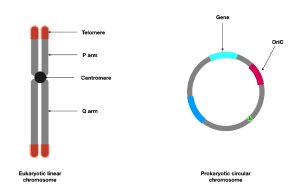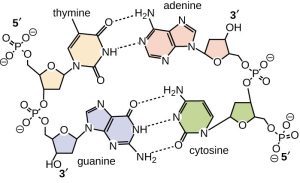DNA and RNA: The Carriers of Our Genetic Code
Who Contains Our Heritable “Data”?
DNA, or deoxyribonucleic acid, is the double-stranded molecule that carries the genetic instructions for the development and functioning of all living organisms. Its structure consists of two complementary strands connected by chemical bonds between bases. These bases—adenine (A), thymine (T), guanine (G), and cytosine (C)—form the “rungs” of the DNA ladder, encoding the genetic information.
RNA, or ribonucleic acid, also plays a role in transferring genetic information. Unlike DNA, RNA is a single-stranded molecule. It is a key player in protein synthesis and serves as genetic material for certain viruses. The bases in RNA are adenine (A), uracil (U), guanine (G), and cytosine (C).
DNA and RNA are the primary carriers of heritable information, containing the genetic code passed from one generation to the next. This code determines an organism’s traits, including physical appearance, metabolism, and disease susceptibility. Replication ensures the accurate transfer of genetic information, while mutations introduce genetic variation and drive evolution.
DNA in Eukaryotic and Prokaryotic Cells
In eukaryotic cells, DNA is packaged into chromosomes within the cell’s nucleus. Chromosomes are composed of DNA and proteins, and during cell division, they replicate and distribute to daughter cells, ensuring each cell receives a complete set of genetic instructions.
In prokaryotic cells, such as bacteria, DNA is found in a single circular chromosome. Prokaryotes also possess plasmids, which are small circular DNA molecules containing additional genetic information.

Other types of genetic materials also exist in eukaryotic cells, such as mitochondrial DNA and chloroplast DNA, which play a role in passing heritable information.
Nucleotide Base Pairing in DNA and RNA
The specific pairing of nucleotide bases is a fundamental aspect of DNA and RNA structure. In DNA, adenine (A) pairs with thymine (T), while cytosine (C) pairs with guanine (G). This complementary base pairing holds the DNA strands together, enabling the double-helix structure and ensuring accurate replication.
In RNA, uracil (U) takes the place of thymine, so adenine pairs with uracil (A-U). This is a key structural difference between DNA and RNA.
Purines and Pyrimidines
The chemical structure of nucleotide bases determines how they pair:
Purines: Adenine (A) and guanine (G) are purines with a double-ring structure.
Pyrimidines: Cytosine (C), thymine (T), and uracil (U) are pyrimidines with a single-ring structure.
This difference ensures specific base pairing: purines always pair with pyrimidines. Adenine pairs with thymine (or uracil in RNA), and guanine pairs with cytosine. This pairing provides stability and maintains the accuracy of the genetic information.

Structure and Function of DNA and RNA
The sugar-phosphate backbone of DNA and RNA provides structural support, while the sequence of bases encodes the genetic information. Together, these features allow DNA and RNA to transfer heritable information in all living organisms, making them fundamental to life as we know it.







